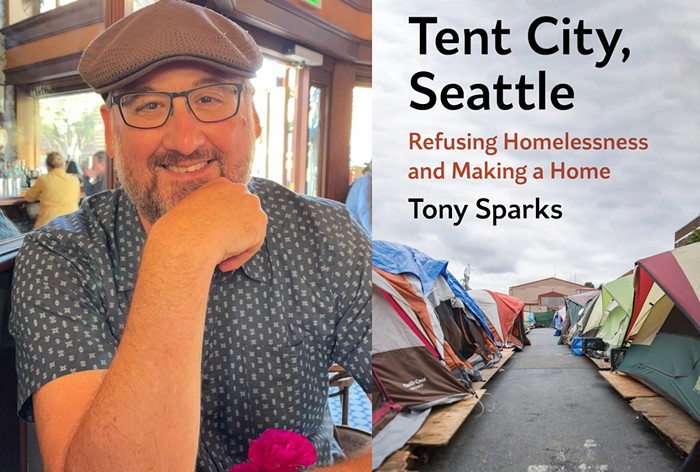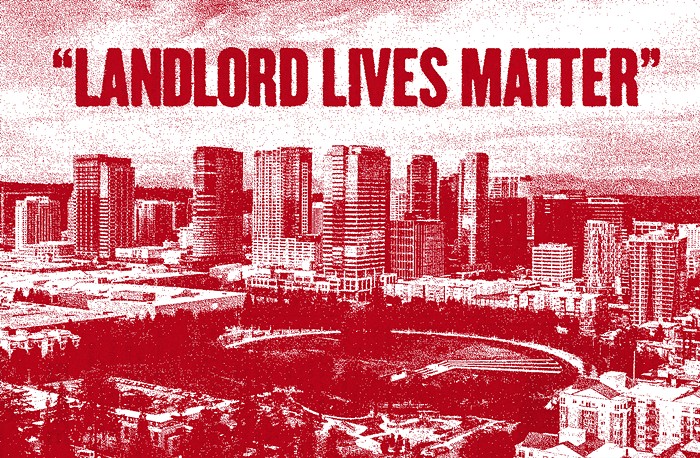On Tuesday, the city council unanimously approved Bruce Harrell's big plan to encourage developers to convert empty office buildings into apartments. There are, of course, more rational ways to deal with Seattle's housing crisis, which has less to do with supply, and more to do with what the urban geographer David Harvey calls "accumulation by dispossession." But a consistently rational approach to housing would undermine the market's primary objective, which is to make life expensive. And the main objective of a pro-business City Hall is to turn its back on this fact and to form and push policies that move in the opposite direction of any reasonable solution that might result in actual affordability.
Mayor Bruce Harrell believes "innovative ideas," the purifying powers of "competition," and the plain commonsense of "removing regulatory barriers" will end, once and for all, downtown's real estate slump, which is nothing but a market failure. The animal spirits (in the Keynesian sense) that ignited the decade-long building boom are gone. What is to be done? The budget-strapped city must try to excite developers with the same devotion and ingenuity that zookeepers use to try to get reluctant rhinos to copulate.
Councilmember Tanya Woo's two cents on KOMO:
I've converted a hotel into workforce housing and know how expensive it is. It’s about three times more expensive than building new... I believe it will help reactivate downtown. We desperately need housing. This will help with that.
Though KOMO might have misquoted Woo, the statement nevertheless perfectly captures the core incoherence of the office-to-residential plan. The councilmember leaps from a fact (converting even a hotel into housing is very expensive) into a fiction (the conversion of office buildings into housing will reactivate, will help with all of that) without rhyme or reason. There is no causal link between one and the other. This is housing policy as quantum mechanics. This jumping about (or leap of faith) is what bothered Erwin Schrödinger so much. He wanted consistency, continuity, local realism. Not City Hall. Causality be damned. What matters is that it looks good on paper and in the mainstream papers, and, most importantly, doesn't rankle the rich.
To get a good sense of the absurdity of Harrell's office-to-housing plan, one only has to read PBS News' excellent and not long post, "Analysis: Here’s what it would take to turn empty office buildings into residential housing." Here we see what developers are really up against. A lot of money must be spent for these conversions to happen. There's no two ways about it without a major social (rather than just engineering) transformation (more about this in a moment). First of all, not all office buildings meet the bill. And those that do, need a good deal of restructuring, the most costly of which will involve plumbing.
PBS News:
In office buildings, most plumbing is centralized, often in the building’s core. For instance, bathrooms tend to be grouped together and located in the same spot on each floor. However, in residential buildings, plumbing is distributed throughout. Each unit typically has its own bathroom and kitchen, and each requires drinking water and sanitary sewer.
Reworking the plumbing for water should be possible. However, reworking the sanitary sewer system would be much more difficult, especially on upper floors. Gravity makes things run downhill, and longer horizontal pipes need more vertical drop to keep things flowing in the right direction.... If the owner wanted to invest the money, it would be doable – but expensive.
This is just the half of it. This is why Harrell's plan is nothing more than a distraction. He can't fix the housing crisis, so he has to make some noise somewhere, and that somewhere is, in this case, conveniently of no real significance. But this doesn't mean that the conversion program would not work. It could work if we were socially, rather than entrepreneurially, innovative.
For example, the plumbing in an office building is centralized. Why? Because an office is actually a communal space, a shared space. The difficulty, then, is transforming this centralized work-related structure into one that is individualized for the preservation of middle-class notions of respectability. This is what makes Harrell's plan so worthless. The cost of the transition from shared space to severely divvied-up space will make the apartments unaffordable for most ordinary citizens. And this is why such proposals are so popular, so much in the news these days. As is, they will only reproduce the present affordability crisis by perpetuating dispossession in the form of market-rate rents.
With downtown office vacancy rates around 25%, Texas' biggest cities are actively transforming empty office buildings into residential havens, a response to both the remote work trend and acute housing shortages. pic.twitter.com/oj5wWMqy5G
— Texas Letter (@TexasLetter) December 6, 2023
The city of Chicago has announced plans to convert empty office buildings into mixed-used and residential towers.https://t.co/rjs2SB7OXQ
— Dezeen (@dezeen) March 8, 2024
Think about this for a moment, and the solution becomes clear. The office-to-housing program would really work for the working classes of Seattle if they switched from divided living to shared living. This entails, of course, a reorganization of social values. It means living more with others, doing more with others, being more with others. But this is doable (or, to borrow a fancy expression from the philosophy of physics, be-able). It takes a village to make office-to-housing make sense.
If, say, much of the plumbing in office buildings remains, as with other key systems, centralized and therefore shared, the rest can be easily compartmentalized because, as the PBS News post points out, "most office buildings are designed so that the tenants can easily build out the space to suit their needs. This means they can put up walls, take power where they need, and select finishes like flooring, paint and lighting."
If the communality of the workspace is preserved, then the conversion is reduced to being mostly cosmetic. This would considerably reduce reconstruction costs and attract those who are happy to forego vacuous middle-class values for a bargain. Finally, living communally in a residential building is, in the age of climate change, more principled than living in those bloated luxury boxes that developers can't stop building.




















